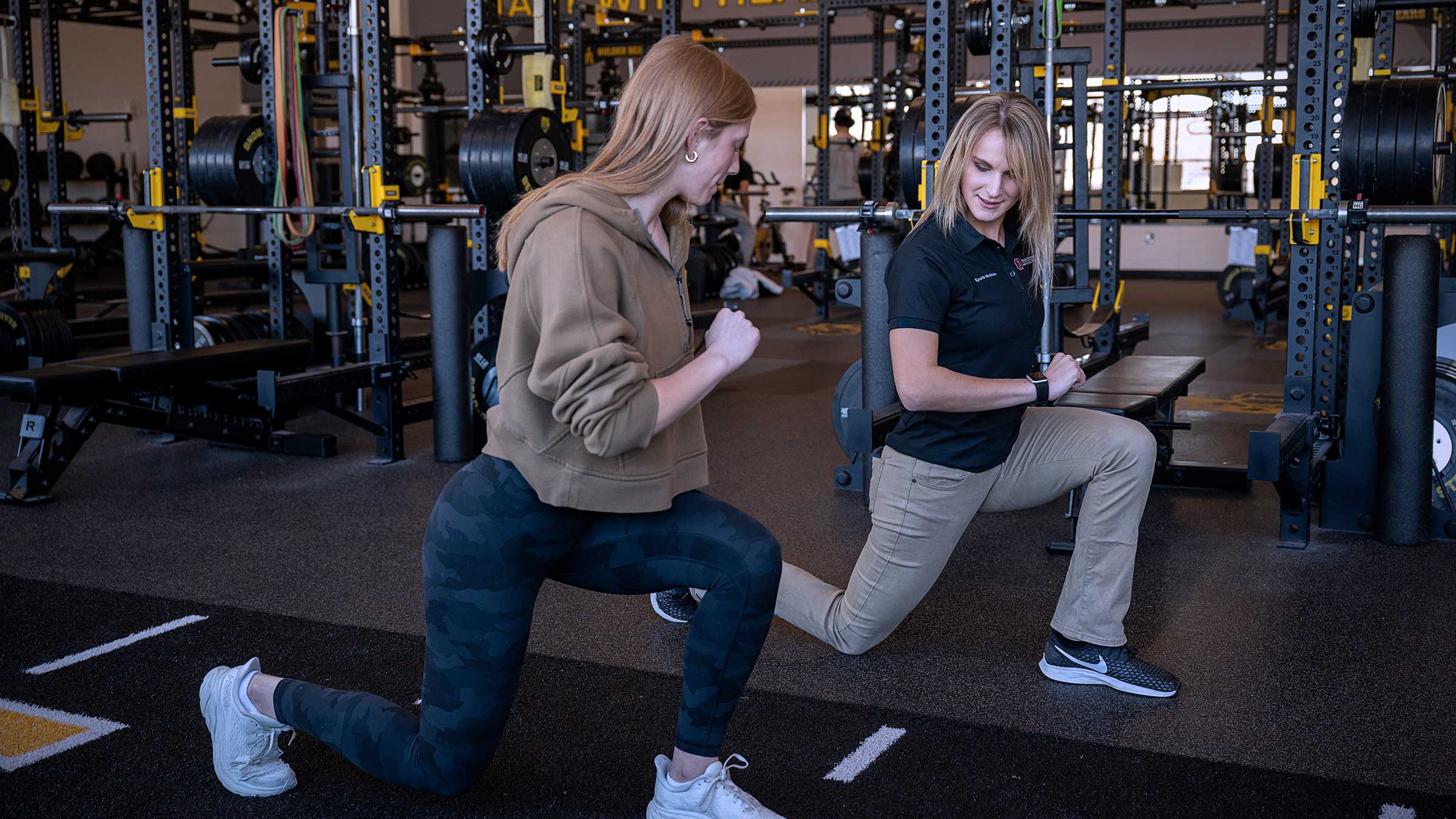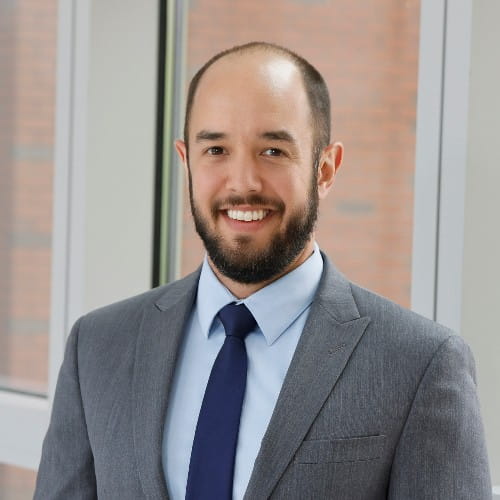
Athletic trainers and physical therapists work with patients who have experienced physical injuries. But when would you see one over the other? At The Ohio State University Wexner Medical Center, these specialties often work together to provide the best possible care for patients.
Key differences between athletic trainers and physical therapists
Physical therapists are focused on helping patients regain normal mobility and function, in order to manage daily activities without pain. The majority of PT patients, ranging from people who live more sedentary lifestyles to competitive athletes, have either already had surgery or are experiencing chronic pain or joint issues. Physical therapists are usually embedded in a clinical setting, which can mean either an acute inpatient environment such as a hospital, or an outpatient facility.
Athletic trainers primarily work with people who are actively involved in a sport or other physical activity. When a player is injured, an athletic trainer is there on the field or court to provide immediate care.
Athletic trainers are also highly focused on injury prevention. At The Ohio State University, our preseason performance assessments look for deficits – for example, if an athlete’s hips are overly tight, they seem off-balance, or if one shoulder moves better than the other. An athletic trainer can design a strength-building program based on the individual athlete’s needs, which can help prevent a serious injury in the future.
Both physical therapists and athletic trainers are board-certified, and in Ohio, the state-issued license must be renewed every two years. Physical therapists must obtain a doctorate in physical therapy. Guidelines recently changed for athletic trainers, and current students are now required to complete a master’s degree.
Collaboration is standard at Ohio State
Athletic trainers and physical therapists regularly team up on injury prevention efforts here at Ohio State. We collaborate with each other, and with other physicians, to identify problem areas and create customized training programs for our athletes.
We’ll also work together to help an injured athlete. For example, let’s say “Billy” tears his ACL during a football game. The athletic trainer will assess him on the field and decide on an immediate care plan, such as immobilizing the injured area and taking steps to reduce swelling.
After Billy has surgery to repair the ACL, he’ll meet with a physical therapist for rehabilitation with the goal of regaining normal function. Once Billy has recovered sufficiently, then the athletic trainer can step back in and focus on strategies to help Billy return to the football field.
However, in some cases, an athletic trainer or physical therapist could end up performing both of these roles – for example, if a high school only has one or the other on staff. In our cases, we both have the expertise to manage a player’s rehab and return to the sport because of our many years of care and respective credentials.
What if I need this care and I’m not a collegiate athlete?
In most cases, a person’s primary care doctor will be the one who recommends physical rehabilitation if they’re experiencing chronic pain. In the case of an athlete, either a physical therapist or an athletic trainer could provide treatment. For example, picture Susie: She’s a 50-year-old runner who sometimes experiences pain in her knees that’s uncomfortable, but it’s not debilitating.
A physical therapist or an athletic trainer could work with Susie to figure out what’s causing her pain. We would perform a joint and muscular assessment and ask questions about her running routine. She might be forgetting to warm up or is running too often. She might have weak ankles and either of us could lead her through a strength training program to fix that.
For a person whose lifestyle isn’t as active, it’s predominantly a physical therapist who would handle their care. At Ohio State, treatment plans are based on the patient’s specific goals. For example, we may see a patient who wants to be able to stand up without assistance after playing on the floor with their grandchildren. A physical therapist can help this patient build the necessary strength.
Ohio State has unique resources for physical rehabilitation and strength building
Ohio State Sports Medicine is exceptionally equipped to provide unparalleled care for our patients, who especially benefit from the multidisciplinary team approach. There are so many experts involved, from athletic trainers and physical therapists to nutritionists, sports psychologists and orthopedic surgeons. We leverage one another’s skill sets to enable us to continue to advance the latest treatments and provide the best care possible.

Ready to be at the top of your game?
Ohio State’s sports medicine experts are here to keep you in your game, maximize your performance and keep you healthy.
Learn more





